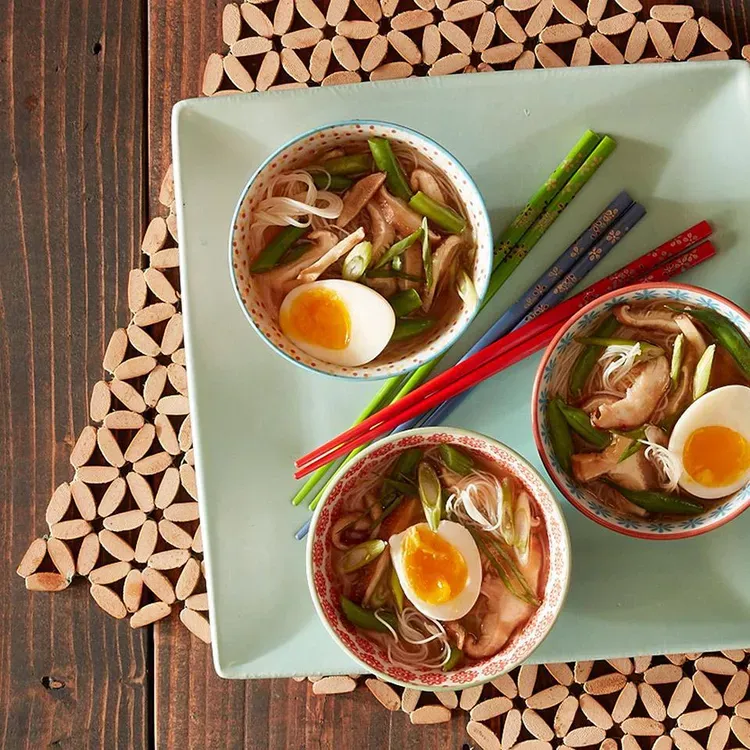Is Miso Soup Gluten-Free? The Essence of a Time-Honored Delight

In the realm of culinary treasures, miso soup emerges as a nourishing and comforting creation that has graced Japanese tables for centuries. But for those seeking gluten-free options, the question often arises: Is miso soup gluten-free? In this exploration, we delve into the depths of miso's origins, its crafting process, the potential for gluten content, and the array of nutritional benefits that make it a cherished addition to health-conscious diets.
The Essence of Miso Soup
Defining Miso
Miso is a traditional Japanese seasoning made by fermenting soybeans, grains (such as rice or barley), and salt with a koji culture – a type of mold that initiates the fermentation process. The result is a versatile paste that adds depth, umami, and a touch of saltiness to a variety of dishes, from soups and marinades to sauces and dressings.
The Crafting Process
The art of crafting miso involves a delicate balance of time, ingredients, and fermentation. The first step involves cooking the soybeans and grains, which are then combined with salt and koji culture. The mixture is meticulously packed into containers and left to ferment for months or even years, during which complex flavors develop, and the paste undergoes transformation.
Is Miso Soup Gluten Free?
Is Miso Soup Gluten Free? Sometimes. Miso can be gluten free if fermented from only soybeans and koji, but traditional miso recipes can also incorporate rice, barley, or other grains. However, while these grains do contain gluten, the fermentation process might break down some of the gluten proteins, rendering the final product gluten-reduced.
However, it's essential to exercise caution when choosing miso products, as variations can exist. Some miso varieties are crafted entirely from gluten-free grains, such as rice or buckwheat, making them safe for individuals with gluten sensitivities.
Nutritional Gems in Miso
Rich in Amino Acids
Miso is not only a flavor enhancer but also a source of essential amino acids. These building blocks of protein play vital roles in cellular function, muscle repair, and overall health.
Probiotic Potential
Fermented foods like miso harbor live beneficial bacteria, known as probiotics, which can support gut health and digestion. These probiotics contribute to the body's microbial balance and may offer immune-enhancing properties.
Vitamins and Minerals
Miso is a treasure trove of vitamins and minerals. It's a good source of B vitamins, including B12 – a nutrient often lacking in plant-based diets. Additionally, miso provides trace minerals like manganese, zinc, and copper, which are essential for various bodily functions.
Antioxidant Power
Miso's fermentation process results in the formation of antioxidants, which help combat oxidative stress and promote cellular health. These antioxidants can contribute to overall well-being and reduce the risk of chronic diseases.
Savoring the Culinary Delights of Miso Soup
A Harmonious Blend of Flavors
Miso soup showcases the art of balancing flavors. The umami-rich miso paste infuses the broth with a depth that's complemented by the gentle notes of vegetables, tofu, and sometimes seaweed. The result is a harmonious blend of taste, texture, and warmth that soothes the soul.
Culinary Creativity with Miso
While miso soup is a timeless classic, miso's potential extends beyond the bowl. Use miso as a marinade for grilled vegetables or protein, whisk it into dressings to elevate salads, or incorporate it into stir-fries for a burst of umami.

Embracing Miso Soup's Nutritional and Culinary Marvels
The Joy of Versatility
Miso soup's allure lies not only in its potential health benefits but also in its adaptability. As a canvas for creativity, miso soup can be personalized to suit individual tastes and dietary preferences. Here are a few variations to consider:
- Classic Miso Soup: The traditional version features a delicate broth infused with miso paste, tofu cubes, seaweed, and sliced green onions. This minimalist approach allows the flavors of miso to shine.
- Veggie-Infused Miso Soup: Elevate the nutritional content by adding an array of vegetables. Consider mushrooms, spinach, carrots, and zucchini to create a wholesome and colorful bowl.
- Seafood Delight: Introduce seafood elements such as shrimp, clams, or fish to add a layer of complexity to your miso soup. The umami from the seafood pairs beautifully with miso's rich flavors.
- Hearty Miso Soup: For a heartier version, include cooked soba noodles, brown rice, or quinoa. This variation offers a satiating and balanced meal-in-a-bowl experience.
Choosing the Right Miso
When it comes to selecting miso, understanding the various types can help you make an informed choice:
- White Miso: Mild and slightly sweet, white miso is a great entry point for those new to miso. It's often made from rice and is fermented for a shorter duration.
- Yellow Miso: This type strikes a balance between sweetness and saltiness. It's made from soybeans and barley and offers a versatile flavor profile.
- Red Miso: With a robust and earthy taste, red miso is aged for a longer period, resulting in its deep flavor. It's ideal for heartier dishes and bold marinades.
- Soy-Free Miso: Crafted from legumes like chickpeas or adzuki beans, soy-free miso offers an option for those with soy allergies or sensitivities.
Miso's Essence: A Wholesome Choice
As you embrace the world of miso, both its cultural heritage and its potential for enhancing well-being become apparent. Miso soup transcends its role as a mere dish; it's a reflection of tradition, a bearer of flavors, and a bridge to culinary exploration. By choosing the right type of miso and incorporating it into your diet, you're not only savoring the umami-rich goodness but also embracing a source of nourishment that resonates with a balance of taste and health.
Conclusion
Is miso soup gluten-free? While the answer carries nuances, the overarching theme of miso's essence is its ability to captivate the senses while contributing to your well-being. Whether you enjoy it in its classic form, experiment with variations, or use it as a seasoning for diverse dishes, miso's potential knows no bounds. As you sip from a warm bowl of miso soup, you're partaking in a tradition that transcends time, connecting you to generations who have cherished its flavors, comfort, and nourishment.
Want more new food ideas? Check out "What does kimchi taste like?"